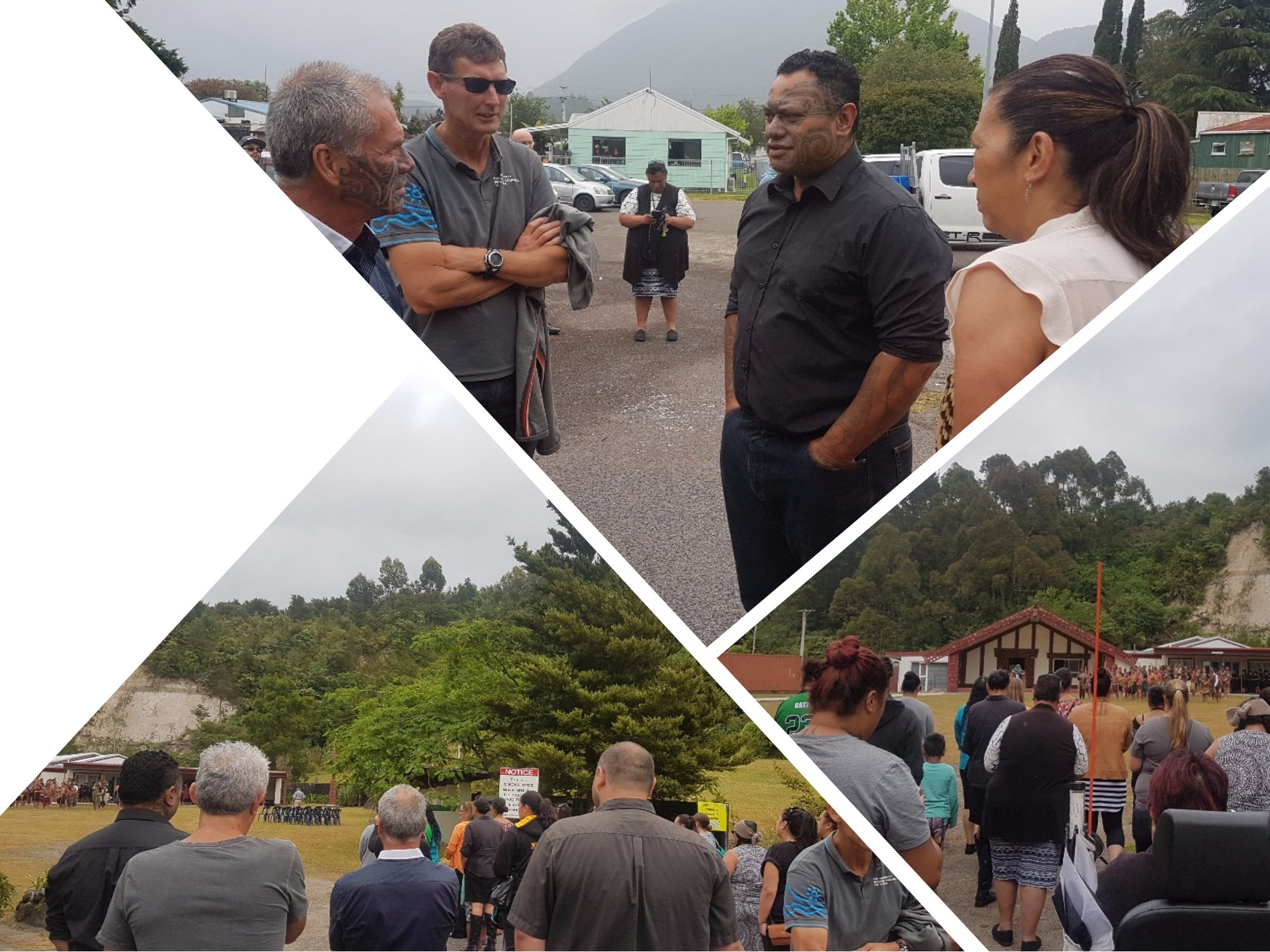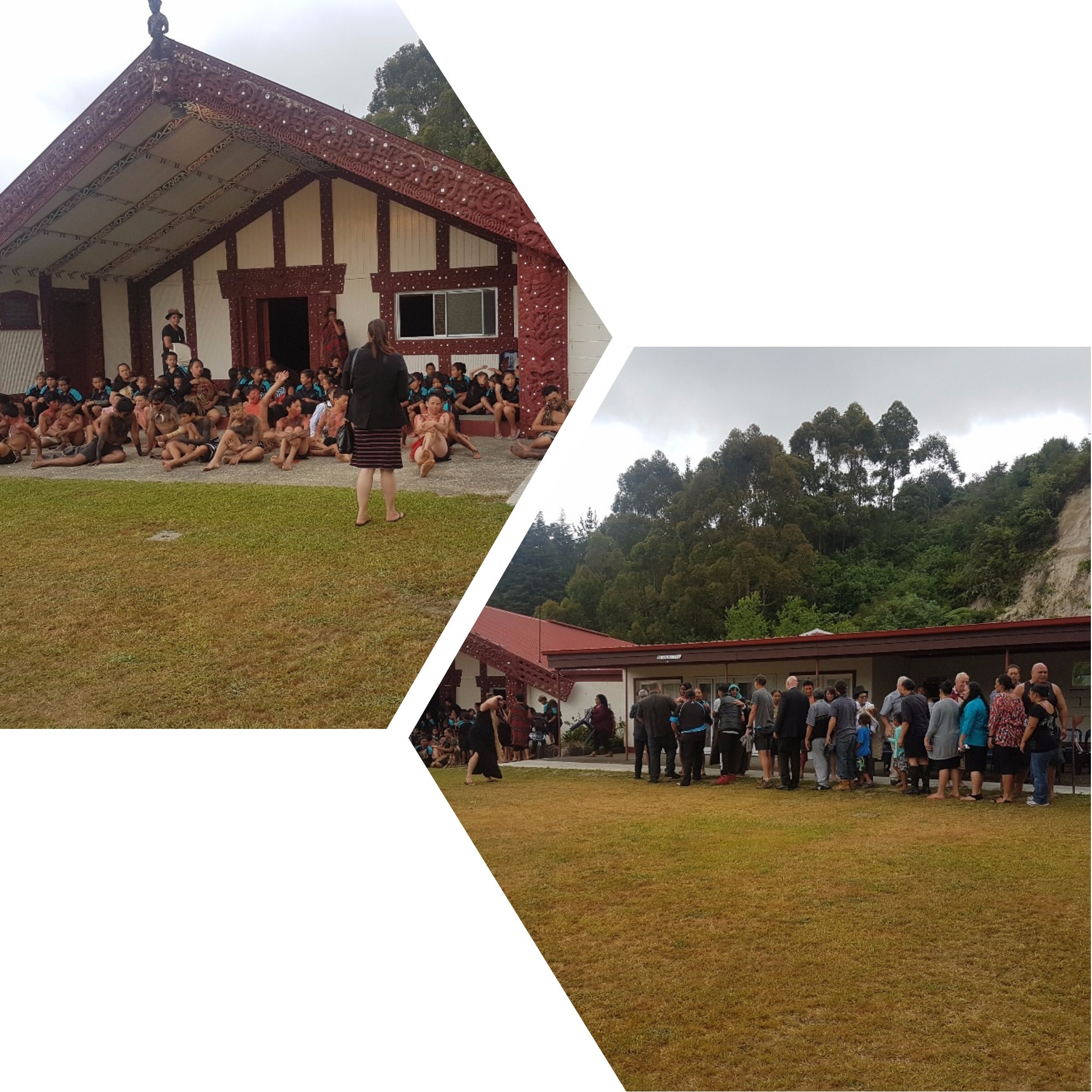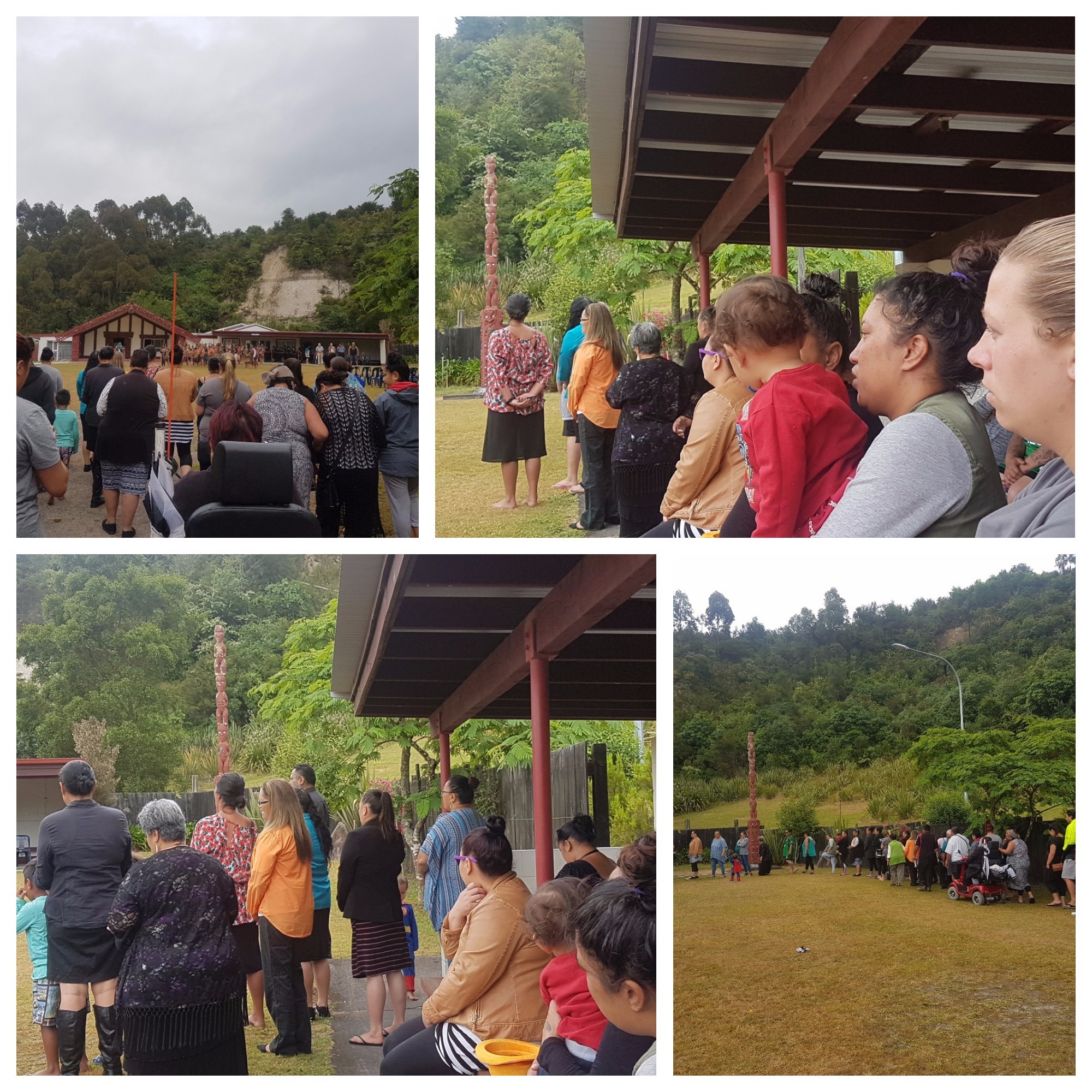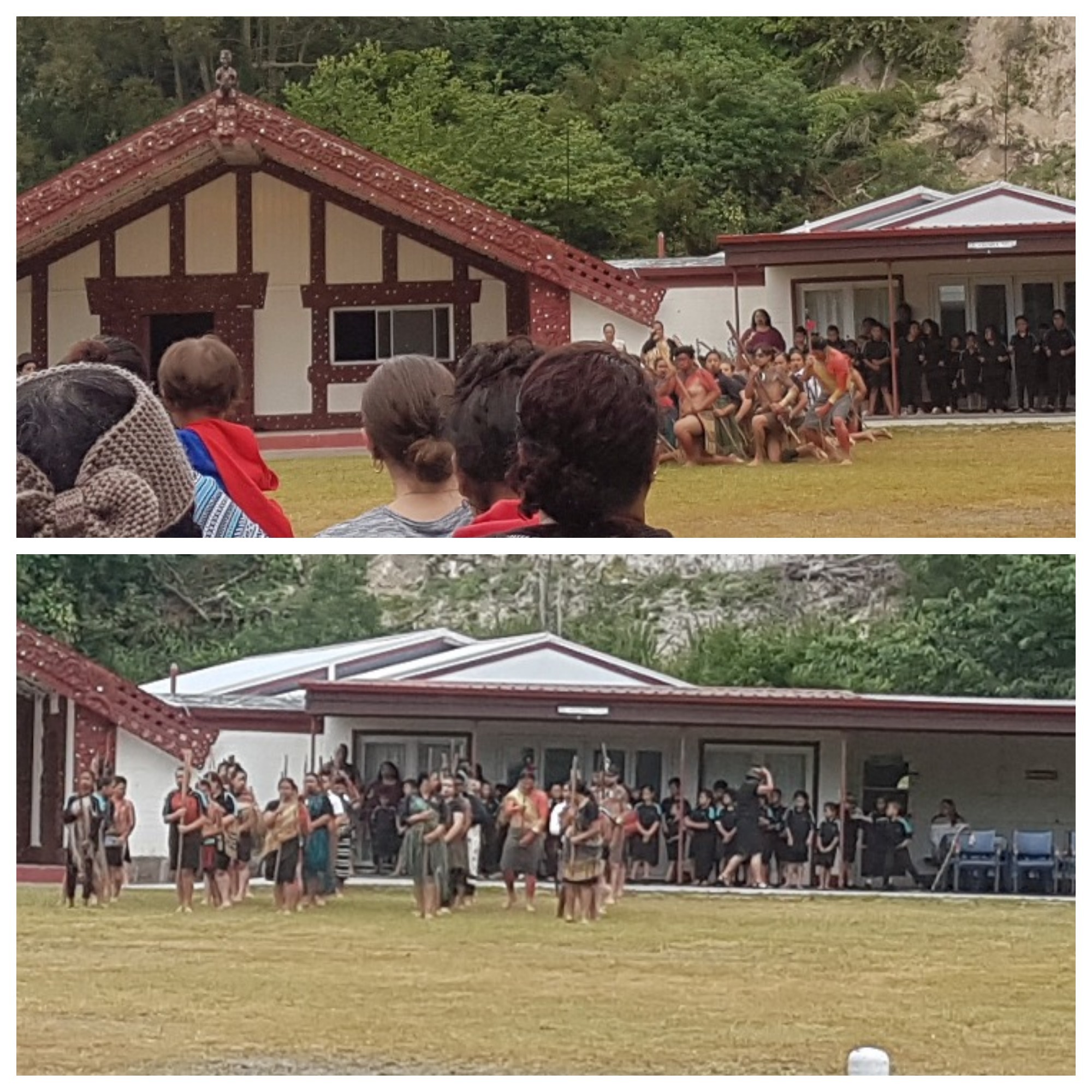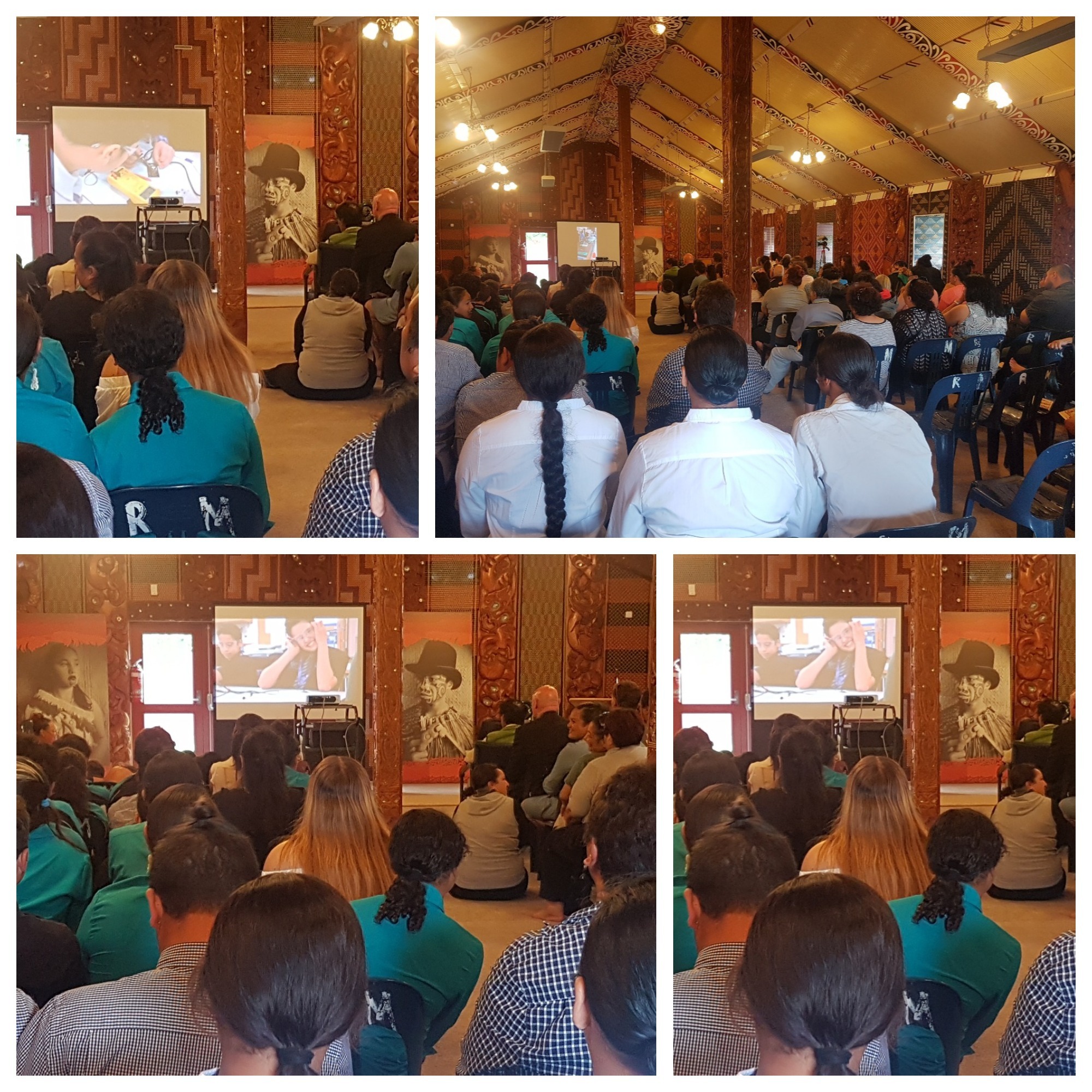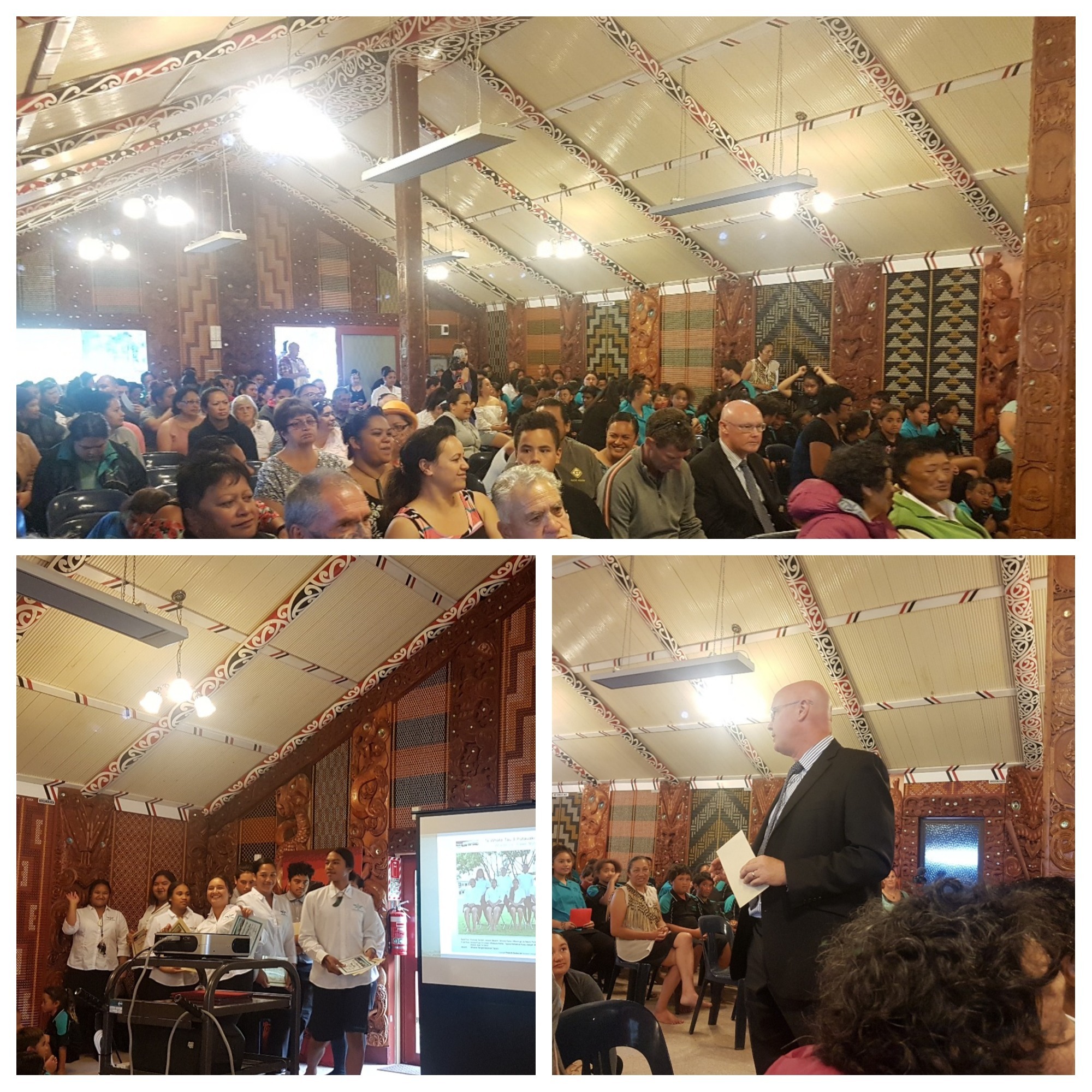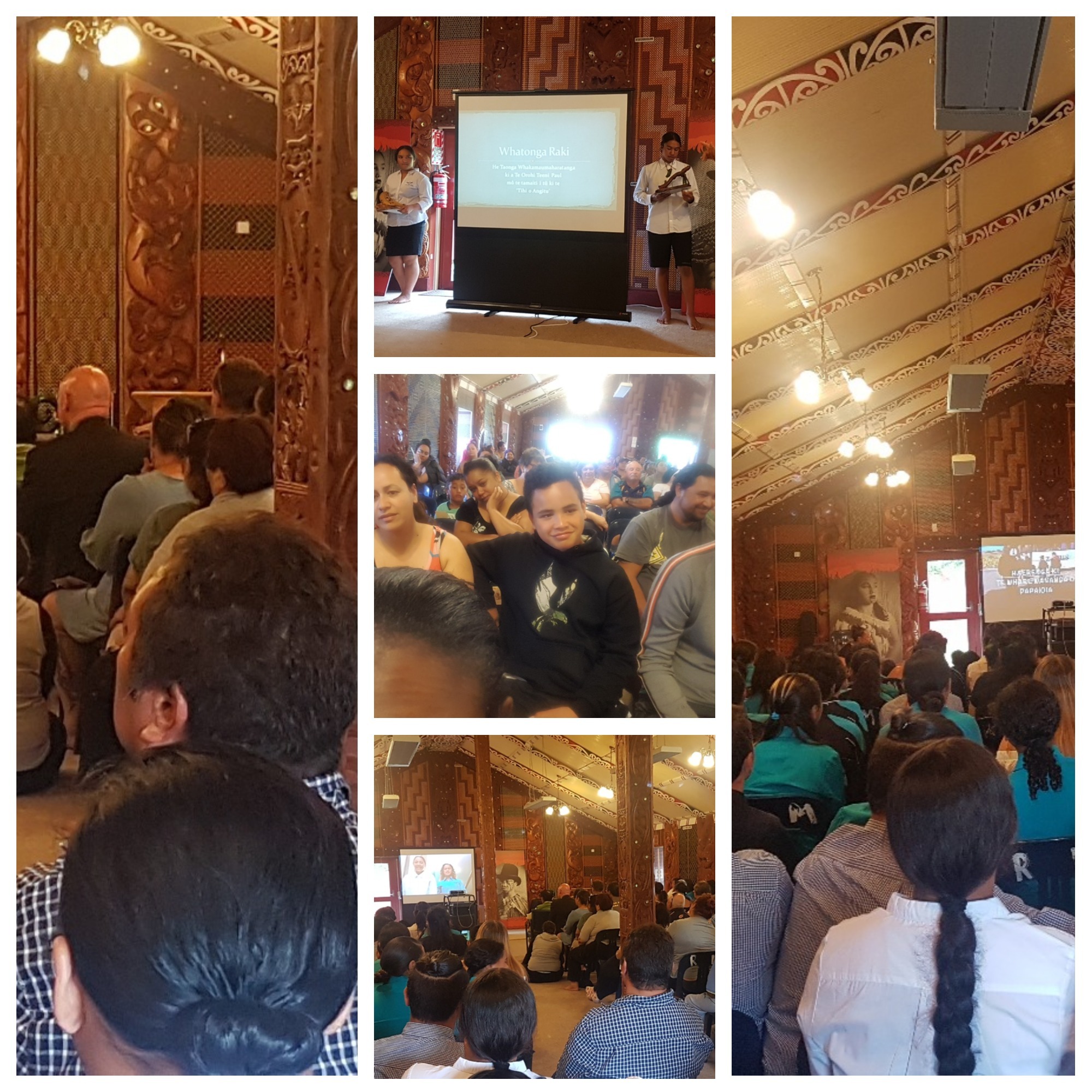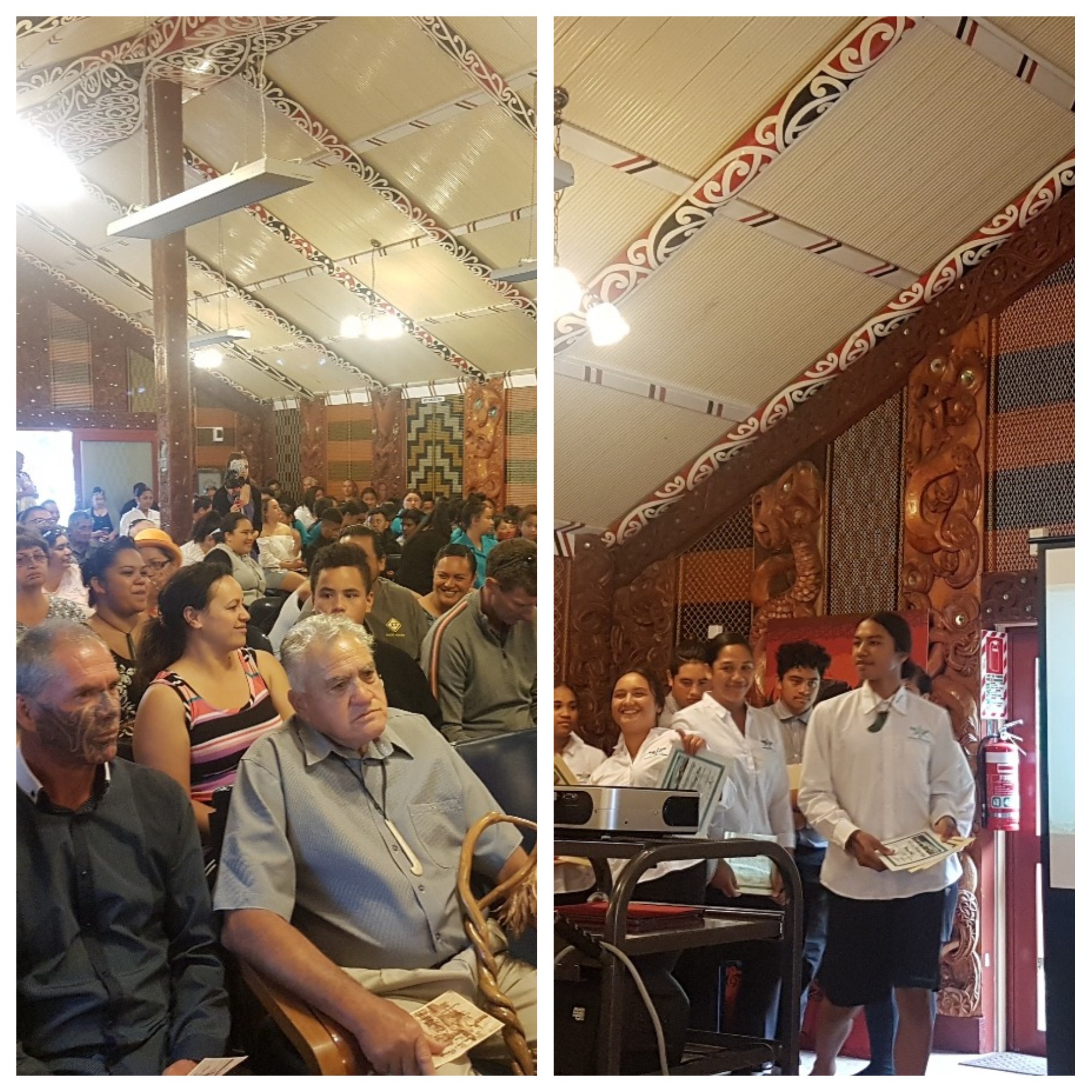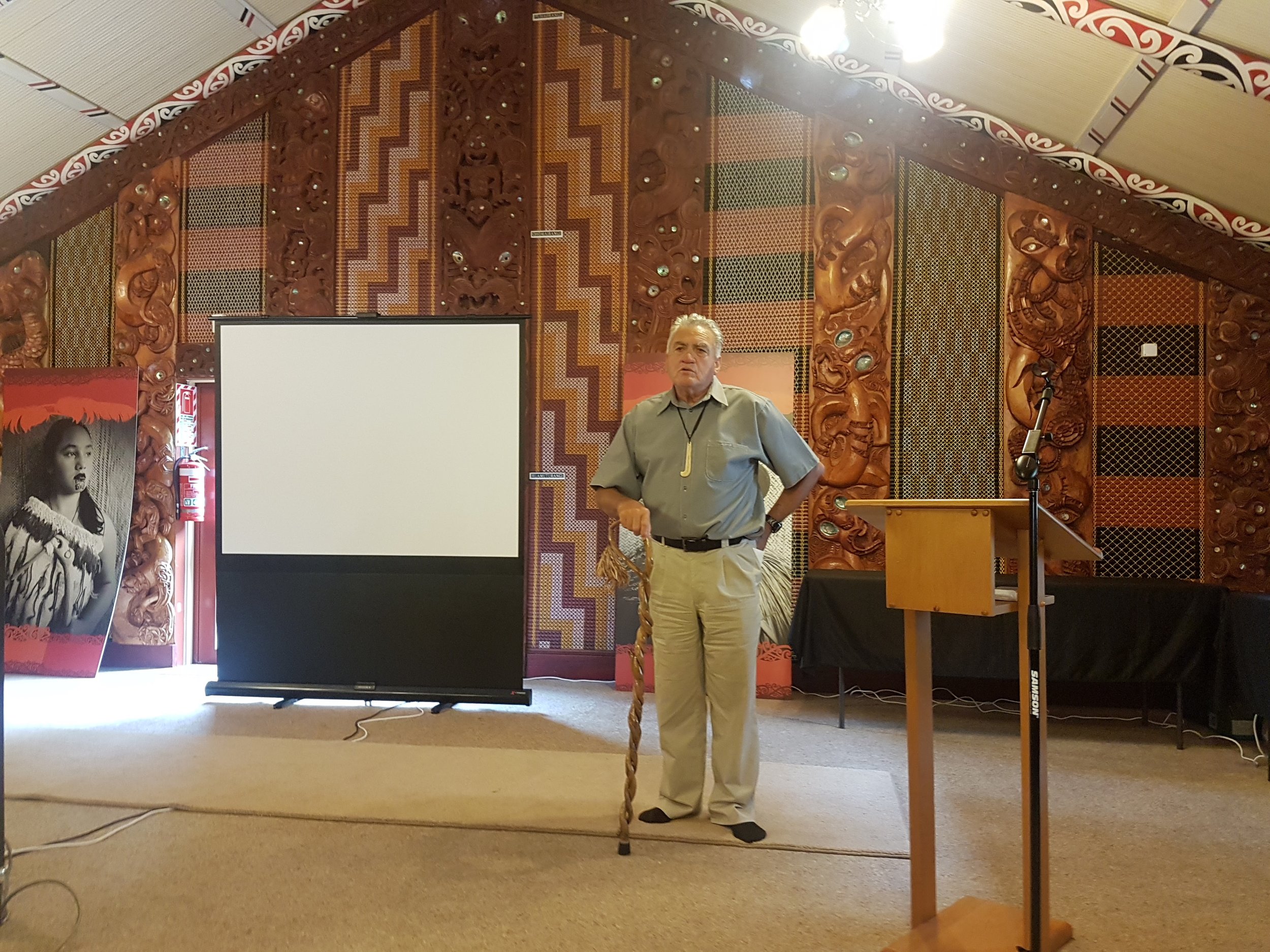Communicating science @ Kawerau
Kawerau rangatahi utilised the opportunity to turn their December prize giving into a grand community event. Held at Rautahi Marae in Kawerau; before a large audience comprising whānau friends and community, students demonstrated why science and technology are fun subjects that hold immense significance for the sustainability of NZ.
Rautahi Marae and the Community Centre is highly valued by rangatahi. In 1961 'the Maori community saw the need for a place which they could call their own and follow their culture. They decided a community centre was needed. In 1962 enough funds were raised for the building of a hall to commence and it was completed in 1963.
Mr John Kameta who was chairman of the Rautahi Maori Committee gave the following message:
Kia Ora Koutou Katoa
Wherever there is a Maori living in a community a Marae is a necessity. For without a Marae, much of the Maori is missing. For a Marae is a place to pray to God, a place to meet and be happy, an place to weep for our dead, a place to house our guests, a place to rise tall in oratory, a place to listen to our elders and that we may learn our history and then know that richness of life and that proud heritage which is truly ours.
Ruatahi means "Many into One". To give each person his turangawaewae (footing) and the feeling of being at home, a representative was elected from the tribal areas of Tai Tokerau, Waitako, Maniapoto, Arawa, Tuwharetoa, Ngatiawa, Tuhoe, Whakatohea, Horouta and Kahangunu to be trustees for the Rautahi Marae.
Raising awareness of the awa project at the marae was spectacular as invited guests from the Kaumatua, Regional council, Board of Trustee, Mayor's office all were represented at the event.
Students presented a series of video presentations of the exciting learning they gained throughout their project on water quality of the Tarawera River. There has been considerable work put in by the Regional council on the catchment over the years. Tarawera Catchment as defined in the Tarawera River Plan, extends from the Tarawera lakes to the coast. It includes the catchments of lakes Ōkaro, Rotokakahi, Tikitapu, Ōkāreka, Ōkataina, Rotomahana and Tarawera, as well as the Tarawera River and its subcatchments.
As the students showcased the various science and tech workshops, the link between science in theory and applied sciences were clearly demonstrated before the audience. Having the involvement of the Regional Council through Mr Scholes was key as connections were fostered between our youth's role and their significance in the process alongside the Regional plan to promote the sustainable management of natural and physical resources within the Tarawera River catchment.
These include ensuring that: (a) There is integrated management of the natural and physical resources of the Tarawera River Catchment. (b) The high quality water in the catchment of the upper reach of the Tarawera River is maintained, and improved where appropriate. (c) The water quality in the lower reach of the Tarawera River is managed, to ensure that the effects of industrial discharges are substantially reduced. (d) The community remains involved in the management process. (e) There is reduction in the discharge of contaminants into the Tarawera River. (f) The mauri of the Tarawera River is restored and the balance maintained.
According to the 2016 report 'the objectives and policies of the Plan have driven significant changes within the catchment over the past decade, particularly the industrial discharges. This has contributed to the improvement in sustainable management of the natural and physical resources within the Tarawera River Catchment. However, other factors, such as the reduction of operations at the mill and the decline in the population of Kawerau, may have also contributed to the achievement of the purpose.
Whanau and friends were delighted, enthralled and warmly congratulated their youth for their involvement and effort toward raising awareness of the value of our rivers and streams.

